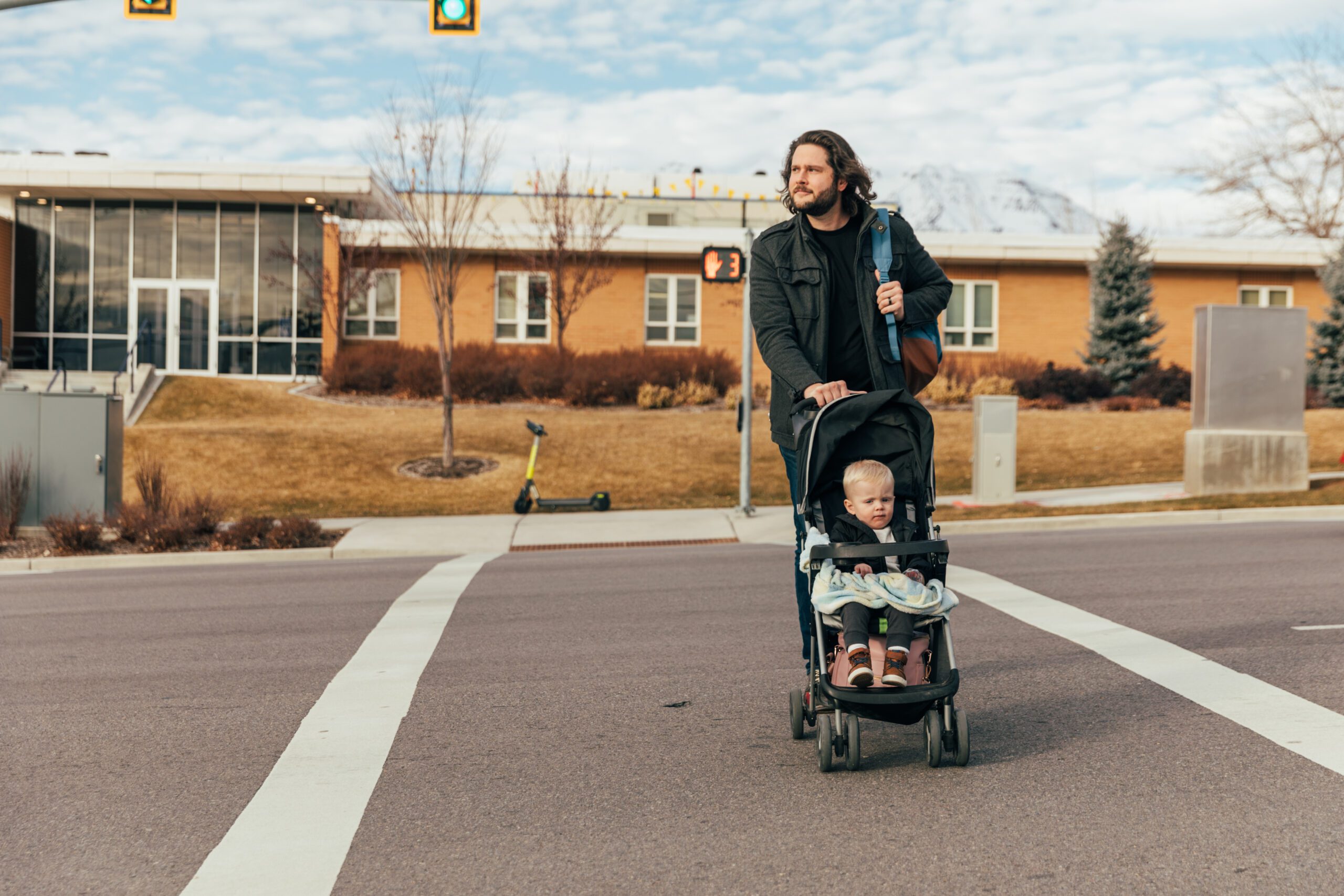United States 
Bridging Early Childhood and Higher Education to Meet the Needs of Today’s Students
Why We Invested: Kids on Campus

United States 
Why We Invested: Kids on Campus

Nearly 4 million parents attend college in the US, and despite earning higher GPAs than non-parenting students, less than half graduate. As these student parents simultaneously navigate raising a child and pursuing a degree — many of whom are the first in their family to do so — they face countless barriers in their journey to creating a brighter future for their families. With more than half of student parents raising children that are not yet school age, access to child care is one of their most significant needs.
Availability of affordable child care is just as important in helping parents complete education and training that can advance their careers, as it is for working parents. In fact, access to on-campus child care has been shown to triple graduation rates among single mothers, the largest group of parenting students. Unfortunately, US campuses have not been immune to the broader child care crisis underlying much of American life: availability of on-campus child care has steadily decreased over the last three decades.
This decline is especially pronounced at community colleges, where student parents are most likely to attend. Addressing child care is one of the most significant ways for community colleges to support the success of their parenting students – but it is also one of the most challenging to bring to campus. Without a clear roadmap outlining the steps and expected costs to bring child care on campus, starting the process can be daunting, even if campus leaders recognize the central role of child care in advancing attainment and enrollment goals for student parents.
That’s why Kids on Campus, a new initiative from the Association of Community College Trustees (ACCT) and the National Head Start Association (NHSA) offers an inspiring and promising solution – not only by helping community colleges better serve the needs of their students, but also by expanding access to quality early childhood education for the broader communities they serve.
Kids on Campus offers an inspiring and promising solution – not only by helping community colleges better serve the needs of their students, but also by expanding access to quality early childhood education for the broader communities they serve.
Watch “Childcare” from the 5-part Raising Up short film series produced by Three Frame Media, which explores the potentially transformative role of Kids on Campus in boosting child care access for student parents.
Launched in 1965 as part of President Lyndon Johnson’s “Great Society” campaign, Head Start is the largest early learning program in the US, providing free early care and education to young children whose families meet income requirements. A two-generation approach has been baked into Head Start from the beginning, providing wraparound services for parents of children in the program and supporting their education, training, and workforce participation. Yet, for many reasons, some Head Start programs struggle to fill their open slots, leaving 180,000 federally funded slots open across the country. Meanwhile, the majority of student parents in community college meet the eligibility requirements for Head Start, and many community college campuses are located within Head Start service areas
Kids on Campus is an innovative partnership between ACCT and NHSA – respectively the two official associations of the community college and Head Start networks – that serves as a “matchmaker” between local Head Start programs and community colleges in the United States. The initiative illuminates the many mutual benefits for both parties in co-locating Head Starts on community college campuses. For example, although the federal government provides 80% of Head Start’s funding, each program must receive 20% of its funding from its local community. For areas with limited resources, this threshold can be tough to meet. Community colleges can provide unused campus space for free or at reduced cost to Head Start programs.
This in-kind support not only helps local Head Start programs meet their community support requirements, but opens up more benefits to the broader campus and surrounding communities. In addition to providing child care for student parents and convenient hands-on experiences to students pursuing early childhood degrees, these partnerships can be mutually beneficial in other ways too, as NHSA’s Victoria Jones notes in a recent blog post: “Dental hygiene students can get practical experience by providing free cleanings to Head Start children and families. Nursing students can conduct health screenings required by Head Start, giving nurses hands-on experience engaging with young children. Students in culinary or food service-related programs can hone their craft while helping Head Start meet daily meal requirements.”
“It’s a partnership that just makes sense,” ACCT’s Carrie Warick-Smith told NPR’s Elissa Nadworny earlier this year. Yet, just 100 Head Start-college partnerships currently exist out of a potential pool of over 1,000 community colleges across the country – a sign that more intentional work needs to be done to break down silos between our early childhood and higher education systems. That’s where Kids on Campus comes in to help guide these partnerships from initial idea to reality. By 2026, they hope to nearly double the number of partnerships by matching an additional 50-75 Head Start facilities with community college campuses and scaling access to child care to more student parents.
The promise of Kids on Campus is right there in its name: a simple declaration that raising children and pursuing education should not be designed as mutually exclusive pursuits.
Addressing the country’s child care crisis will require greater public investment, but political will to invest at the level that meets families’ needs has been slow to catch up to overwhelming public demand. With policymakers at an impasse, Kids on Campus is an exciting and scalable opportunity to unlock greater access to child care for student parents without the need for new legislation or an act of Congress. Colleges and Head Start programs can already start establishing partnerships – and some have. With more investment to identify more potential matches and smooth the minutiae involved with co-locating Head Starts on community college campuses, Kids on Campus can accelerate the pace of progress.
Crucially, this progress does not just extend to current student parents, but prospective ones too. Some community colleges have seen non-enrolled parents whose children attend the campus Head Start explore the community college’s offerings and even enroll. Student parents often must navigate shame and stigma around being a parent in school – nearly 2 in 3 student parents under age 30 say they feel unwelcome on campus. Head Start programs on campus can signal to these parents that they belong, reducing feelings of isolation, yet another barrier to student parent success.
Head Start programs co-located on community college campuses can also also serve the surrounding communities, whether they attend college or not. This means that the broader community can experience the benefits of greater access to quality early childhood education. For communities concerned about their children’s kindergarten readiness, this is yet another boost – 90% of a child’s brain develops before age 5, and access to the kind of education Head Start provides in the pre-kindergarten years can help close learning gaps that, if left unfilled, can multiply across a person’s life.
For those of us who have long been convinced of the transformative power of two-generation approaches that support the success of both parents and children together, the promise of Kids on Campus is right there in its name: a simple declaration that raising children and pursuing education should not be designed as mutually exclusive pursuits. In fact, student parent success benefits us all – for generations to come.